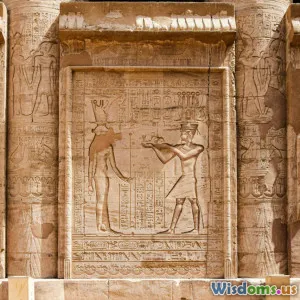
Ancient Inscriptions: Insights into Lost Cultures
6 min read Explore the significance of ancient inscriptions and their role in unveiling lost cultures across history. (0 Reviews)
Ancient Inscriptions: Insights into Lost Cultures
Throughout history, the written word has served as a powerful tool for communication, record-keeping, and cultural expression. Ancient inscriptions, often found on stone tablets, monuments, and artifacts, offer a unique glimpse into the lives, beliefs, and practices of civilizations that have long since vanished. This article explores the significance of these inscriptions, the languages they represent, and the insights they provide into lost cultures.
The Importance of Inscriptions in Archaeology
Inscriptions are invaluable to archaeologists and historians for several reasons:
-
Language and Communication: Inscriptions often represent the earliest forms of communication in human history. They provide insights into ancient languages, grammar, and vocabulary, allowing researchers to understand how people communicated and recorded their history.
-
Cultural Identity: The content of inscriptions can reveal much about the cultural identity of a civilization. From religious texts to political proclamations, these inscriptions reflect the values, beliefs, and social structures of the societies that created them.
-
Historical Context: Inscriptions often date back thousands of years and can be used to establish timelines and chronologies of significant events. They can mark the rise and fall of empires, provide insights into trade routes, and detail conflicts between cultures.
-
Artistic Expression: Many inscriptions are not just informative but are also artistic in nature. They can showcase the artistic styles, techniques, and materials that were significant to a culture, revealing the aesthetic values of the time.
Notable Ancient Inscriptions
Several ancient inscriptions have stood the test of time, providing critical insights into lost cultures. Here are a few notable examples:
1. The Rosetta Stone
Discovered in 1799, the Rosetta Stone features inscriptions in three scripts: Greek, Demotic, and hieroglyphic. It was the key to deciphering Egyptian hieroglyphs and has illuminated our understanding of ancient Egyptian civilization, including their religion, governance, and daily life.
2. The Behistun Inscription
This multi-lingual inscription carved on a cliff in Iran dates back to the 5th century BCE. It was essential in deciphering cuneiform script and provided insights into the Achaemenid Empire’s history, including the reign of Darius the Great and his conquests.
3. The Code of Hammurabi
One of the oldest deciphered writings of significant length, the Code of Hammurabi is a Babylonian legal text inscribed on a stone stele. It provides insight into the social structure, laws, and values of ancient Mesopotamian society.
4. The Mayan Glyphs
The ancient Mayans left behind a wealth of inscriptions in the form of glyphs on monuments, pottery, and codices. These inscriptions help historians understand Mayan history, astronomy, and religion, which were deeply intertwined.
The Challenges of Deciphering Inscriptions
While ancient inscriptions hold immense value, deciphering them can present significant challenges:
- Language Extinction: Many ancient languages, such as Linear A from the Minoan civilization, remain undeciphered, leading to gaps in our understanding of those cultures.
- Cultural Context: Understanding the cultural context in which an inscription was created is crucial. Without this context, translations can be misleading or incomplete.
- Physical Condition: Many inscriptions are damaged due to erosion, natural disasters, or human activity, making it difficult to glean their full meaning.
The Future of Ancient Inscriptions
As technology advances, so too does our ability to study and understand ancient inscriptions. Digital imaging, 3D scanning, and artificial intelligence are opening new avenues for researchers. For instance, using multispectral imaging, archaeologists can reveal faded inscriptions that were previously illegible. This could lead to the discovery of new historical insights and further understanding of lost cultures.
Conclusion
Ancient inscriptions are more than mere relics; they are windows into the souls of lost civilizations. As we continue to decipher and study these remarkable artifacts, we gain invaluable insights into the lives, beliefs, and histories of those who came before us. The stories etched in stone continue to shape our understanding of humanity’s past, reminding us of the shared threads that connect us across time and culture. By preserving and studying these inscriptions, we honor the legacies of those who contributed to our collective heritage.
Rate the Post
User Reviews
Popular Posts





















